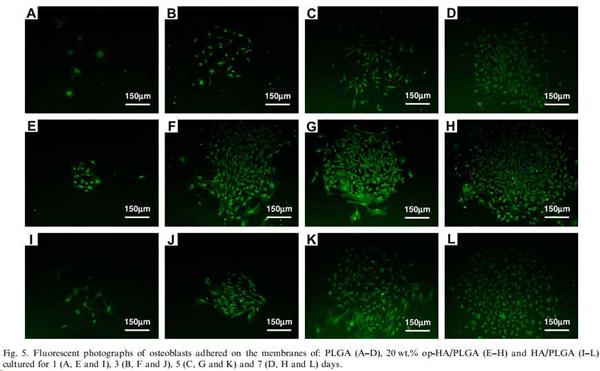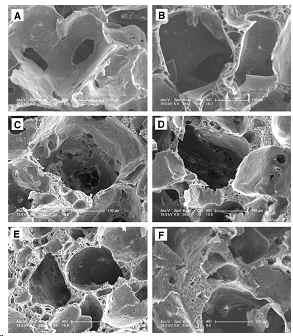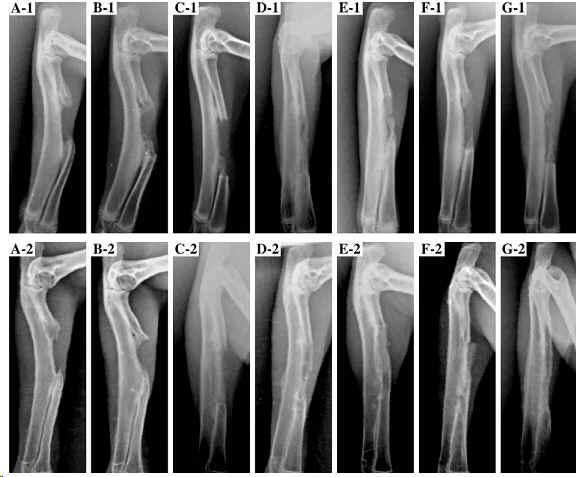The Nano-Composite Scaffold of Poly (lactide-co-glycolide) and Hydroxyapatite Surface-Grafted with L-lactic Acid Oligomer for Bone Repair. Acta Biomaterialia, 2009, 5:2680-2692
作者:Yang Cui, Yi Liu, Yi Cui, Xiabin Jing, Peibiao Zhang*, Xuesi Chen
关键字:Poly(lactide-co-glycotide); Grafted hydroxyapatite nanoparticles; Mechanical properties; Biocompatibility; Bone repair
论文来源:期刊
具体来源:Acta Biomaterialia, 2009, 5:2680-2692
发表时间:2009年
[Abstract]: Nanohydroxyapatite (op-HA) surface-modified with l-lactic acid oligomer (LAc oligomer) was prepared by LAc oligomer grafted onto the hydroxyapatite (HA) surface. The nanocomposite of op-HA/PLGA with different op-HA contents of 5, 10, 20 and 40wt.% in the composite was fabricated into three-dimensional scaffolds by the melt-molding and particulate leaching methods. PLGA and the nanocomposite of HA/PLGA with 10wt.% of ungrafted hydroxyapatite were used as the controls. The scaffolds were highly porous with evenly distributed and interconnected pore structures, and the porosity wasaround 90%. Besides the macropores of 100-300microm created by the leaching of NaCl particles, the micropores (1-50microm) in the pore walls increased with increasing content of op-HA in the composites of op-HA/PLGA. The op-HA particles could disperse more uniformly than those of pure HA in PLGA matrix. The 20wt.% op-HA/PLGA sample exhibited the maximum mechanical strength, including bending strength (4.14MPa) and compressive strength (2.31MPa). The cell viability and the areas of the attached osteoblasts on the films of 10wt.% op-HA/PLGA and 20wt.% op-HA/PLGA were evidently higher than those on the other composites. For the animal test, there was rapid healing in the defects treated with 10 and 20wt.% op-HA/PLGA, where bridging by a large bony callus was observed at 24weeks post-surgery. There was non-union of radius defects implanted with PLGA and in the untreated group. This was verified by the Masson''''''''s trichrome staining photomicrographs of histological analysis. All the data extrapolated that the composite with 10 and 20wt.% op-HA exhibited better comprehensive properties and were the optimal composites for bone repairing.




http://www.sciencedirect.com/science/article/pii/S1742706109001172